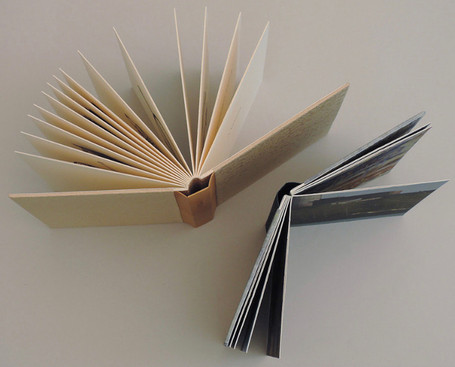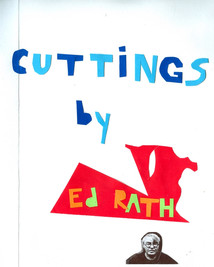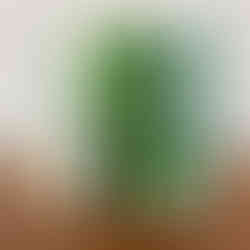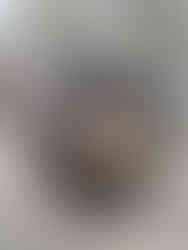The Cinematic View
- frida@artyardbklyn.org

- Dec 9, 2022
- 7 min read
This week’s ART YARD Advanced Studio on Zoom Nighthawks was planned by Maraya Lopez. In this session we explored how cinema and movies influence artists looking at the paintings of Edward Hopper and the film stills of Wim Wenders, and Dario Argento amongst other artists. Maraya prepared a superb power point and had us watch a short fascinating video called Edward Hopper and the Cinema.

Before we began our artmaking I shared a pertinent quote I read earlier in the week in librettist Alan J. Lerner’s The Street Where I Live: A Memoir: “One of the first rules of screenwriting is never use the spoken word when an image can accomplish the same purpose.”
Madison, Kevin, Ed and I referenced specific movies.
Madison depicts a poignant moment in Spike Lee’s “Crooklyn” when the young protagonist is comforted by her oft emotionally absent father. With a tight composition, a strong overhead light source and directional mark making Madison evokes the grief and comfort of the scene.

Focusing on a scene in the 2004 “Spiderman II” when alter ego Peter Parker feels alienated and longing as he spots the object of his affection in front of a movie theater. While still in process, Kevin’s piece already packs a wallop of color and cinematic drama.

Ed writes: “My collage depicts a scene from Vladimir Nabokov's novel, "Lolita." In this scene the protagonist, Humbert Humbert, a sophisticated European writer, approaches the Haze Boarding House with great trepidation. In fact, he finds the house so off-putting he is about to turn around and leave. However, he decides to stay, and the story unfolds from there.
Nabokov's novel is breathtakingly satiric. He describes American culture, in all its kitsch and glitter, from the view point of a bemused and bewildered aesthete.
For me, Nabokov captures the same America that Edward Hopper painted. Both observed the harsh reality of American life beneath the novelty of its shiny newness and unfulfilled aspirations. And both created imagery of cinematic scale.”

I referenced the opening scene of Ingmar Bergman’s “Fanny and Alexander”, in which the camera pans over a lush stage set illuminated by candles, a few beats later revealed to be a toy. Setting a tone of magic and shifting realities.

Pat, Karla and Marilyn responded in a more general way to the cinematic topic.

Karla explains: “My movie inspiration was black and white film. I love the framing, dynamic lighting and use of shadows. Wenders stated that he learned more from painters about photography than from photographers. He shifted his perspective on framing subject matter when introduced to the square format of Polaroids. Subject became the center. I decided to place my subject (segments of 1951 black and white film shots) in a more square format and use what I admire most in Hopper’s works: light, palette, line and the incorporation of windows. Everyone had great stories for visually translating a favorite film. Ed’s Nabokov Hopper comparison was fascinating! Thanks Maraya for such a great lesson. I really liked your artist choices for developing this comparative presentation!”

Marilyn created a dramatic stormy tree scene during class. In addition, the next day she created a mysterious illuminated window beckoning in the dark, based on the dramatic evening light at sunset on her wall.


Marilyn compliments the session and artwork: “Maraya put together a wonderful lesson around Edward Hopper and the cinema and Meridith did a great job of presenting. I loved the way the video showed the influence of Hopper on cinematographers with film clips side by side with the pictures. They were matched perfectly with the colors, shadows, costumes, and sets. The projects presented by Kevin and Madison captured the Hopper colors, moods, and lighting; and the stories they told about their work were poignant. Ed’s takeoff on Lolita incorporated the light in the windows that seemed a bit spooky. Karla’s collage reminded me of a location on Montgomery Street in San Francisco that I saw on a hike several years ago. A large photo of Humphrey Bogart was in the window of the apartment where he and Lauren Bacall filmed "Dark Passage”. Another great day at ART YARD Advanced Studio!!"
I sent images of the art created in the session to Maraya who responded: “Although I couldn’t be present for this lesson, due to an unruly flu, I was very grateful to Meridith for presenting the lesson. Thank you! I am so pleased to see all of the wonderful ways in which everyone interpreted Edward Hopper and the Cinema! Madison took it home with the subdued color palette which really creates a mood in the work. Meridith’s piece is very Baroque with the stunning blood red curtain hanging in the balance. Ed’s bright color palette subverts the ambiguity of the subject matter. The fragility of the collage alludes to a miniature movie set. Pat’s use of green and red is reminiscent of Wim Wender’s color palette in Paris, TX. Just like the movie, there is a loneliness in the isolation of the little kitty staring directly at us. Karla’s use of collage and line work form an interesting architectural plan of sorts. There is a surreal quality similar to that found in Hopper. Kevin’s snapshot of two different sketches looks like an actual movie storyboard, with ideas moving off the page. He captured the ominous feeling prevalent in many of Hopper’s paintings. I love Marilyn’s lightning bolts, rain and uprooted tree. All the elements combined in a tight space mange to create a sense of angst with something menacing brewing beyond the eye.”

Again, Tuesday found those of us not battling flu or covid, working overtime or studying for finals at ART YARD Advanced Studio in person at BWAC for a lesson on how to make Drum Leaf Books with Golnar Adili. Golnar shared many examples of this style artists book.
Examples of Drum Leaf books

“The drum leaf binding, developed by bookbinder and artist, Tim Ely, is an adhesive book structure made up of single folios attached back to back. Similar in make-up to a children's “board book,” it utilizes minimal amounts of adhesive, avoiding issues of expansion and contraction. Only one side of each folio is visible in the finished book, making it an ideal structure to use when it’s only possible to print on one side of a sheet of paper. It’s perfect for printmakers and artists working with thick, stiff, or digitally optimized papers. Because there is no sewing in the gutter of the sections, it allows for seamless image crossover across the fold and it lays very flat. Requiring minimal equipment and tools, it’s quickly made and can vary greatly in its function and appearance depending on paper, detailing, and covering material choices.” Drum Leaf Binding, San Francisco Center for Book Arts, 2015

Ed exclaimed that he had no idea we would have such a technical session. Technical indeed -- I was so engrossed in measuring and gluing I forgot to take photos! Here are some images Ed and I took of our Drum Leaf books completed at home.
Ed Rath, Cuttings (Drum Leaf Book)
Meridith McNeal, And A Golden Pear (Drum Leaf Book)
Other Art News
In another dispatch from Prague, Managing Director Dennis Buonagura writes: “I visited the Mucha Museum in the center of Prague and was happy to learn that Mucha’s work was shown in the Brooklyn Museum in 1921. It was excellent to see the word Brooklyn while being so far away from home. The museum is quiet and small but with great information, including a terrific film of the artist's life and work. It would serve as an excellent field trip for Advanced Studio!!!!!

His works are seen throughout the city - and most especially at the Municipal House (Obecní dům). Czechs are very proud of Mucha - his works appear on almost every menu, on advertisements, subway and streetcar maps, stamps, and even some paper money. I’d very much recommend a visit when in Prague.
Artworks by Edvard Mucha, and Mucha Museum installation, Prague. Photos by Dennis Buonagura.
Prague has lots of public art throughout the city - way more than I got to see and/or photograph - including the very popular Lennon Wall (yup - JOHN LENNON and not Vladimir Lenin). I wasn’t overly impressed at the scene (people adding graffiti upon graffiti - chanting - taking selfies, etc). But everyone else seemed to love it. I kind of have the same feeling about Strawberry Fields in Central Park - maybe I’m just getting old and crabby (getting???).”
Public art in Prague. Photos by Dennis Buonagura.
Two exhibitions of note currently on view in lower Manhattan:
In Paris,a two-person exhibition of works by American painter Anne Harvey (1916-1967) and English sculptor Raymond Mason (1922-2010) is up at Steven Harvey Fine Arts Projects, 208 Forsyth Street, Lower East Side, New York Through December 10, 2022. Both artists spent the majority of their working lives in Paris and captured their adopted city with extraordinary detail and verve. This exhibition includes Anne’s large oil portrait of Brancusi in his studio, painted circa 1934 when she was eighteen years old.

Tom Uttech: Headwinds on Windigoostigwan on view at Alexandre Gallery, 291 Grand Street, Lower East Side, Manhattan through December 22. Uttech’s over-the-top packed-to-the-gills landscape paintings depict the remote wilderness of the Precambrian Shield—a vast expanse of land that spreads across southern Canada, Minnesota, and his native Wisconsin. Uttech renders woodlands, lakes, swamps, and rivers with a magical realist precision that illuminates the majesty of this precious landscape, part of the ancestral lands of the Ojibway people.

I am looking forward to seeing two other current NYC exhibitions. Related to our Advanced Studio on zoom this week, Edward Hopper’s New York on view at The Whitney Museum through March 5, 2023 takes a comprehensive look at Hopper’s life and work, from his early impressions of New York in sketches, prints, and illustrations, to his late paintings, in which the city served as a backdrop for his evocative distillations of urban experience.

Opening Thursday, December 15th 6-8pm at Bitforms Gallery, 131 Allen Street, NYC, World Wind an exhibition featuring new artworks by Marina Zurkow and collaborative, generative pieces by Zurkow and James Schmitz.

Quite fitting in our Year of Planet Earth, (from the press material) “The title of the exhibition takes inspiration from a mural made by Zurkow in collaboration with Midjourney, an artificial intelligence software that creates images from textual descriptions. Through a prompt by the artist to the software—”World War II agitprop map of pollution and climate change”—World Wind incorporates AI’s perception of climate change with the artist’s guidance, editing, and direction. Zurkow positions iconography representative of ecological transformation within a style reminiscent of lithography and propaganda. Bordered by bold red and thick lettering, the work suggests both a reference to the past and a nod towards an inevitable future.”
♡ 🖤🎥♡















































Comments